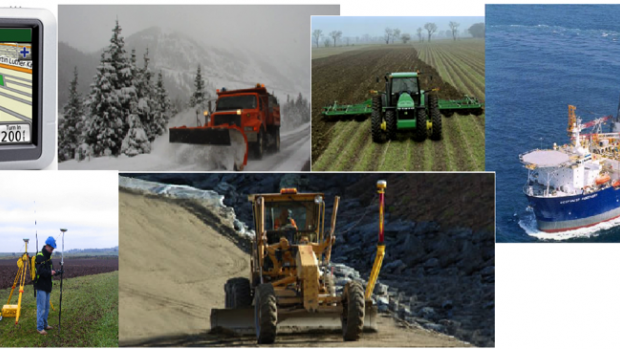
The use of single and dual frequency satellite radio navigation systems, like the Global Positioning System (GPS), has grown dramatically in the last decade. GPS receivers are now in nearly every cell phone and in many automobiles, trucks, and any equipment that moves and needs precision location measurements. High precision dual frequency GPS systems are used for farming, construction, exploration, surveying, snow removal and many other applications critical to a functional society. Other satellite navigation systems in orbit include the European Galileo system and the Russian GLONASS system.
There are several ways in which space weather impacts GPS function. GPS radio signals travel from the satellite to the receiver on the ground, passing through the Earth’s ionosphere. The charged plasma of the ionosphere bends the path of the GPS radio signal similar to the way a lens bends the path of light. In the absence of space weather, GPS systems compensate for the “average” or “quiet” ionosphere, using a model to calculate its effect on the accuracy of the positioning information. But when the ionosphere is disturbed by a space weather event, the models are no longer accurate and the receivers are unable to calculate an accurate position based on the satellites overhead.
In calm conditions, single frequency GPS systems can provide position information with an accuracy of a meter or less. During a severe space weather storm, these errors can increase to tens of meters or more. Dual frequency GPS systems can provide position information accurate to a few centimeters. In this case the two different GPS signals are used to better characterize the ionosphere and remove its impact on the position calculation. But when the ionosphere becomes highly disturbed, the GPS receiver cannot lock on the satellite signal and position information becomes inaccurate.
Geomagnetic storms create large disturbances in the ionosphere. The currents and energy introduced by a geomagnetic storm enhance the ionosphere and increase the total height-integrated number of ionospheric electrons, or the Total Electron Count (TEC). GPS systems cannot correctly model this dynamic enhancement and errors are introduced into the position calculations. This usually occurs at high latitudes, though major storms can produce large TEC enhancements at mid-latitudes as well.
Near the Earth’s magnetic equator there are current systems and electric fields that create instabilities in the ionosphere. The instabilities are most severe just after sunset. These smaller scale (tens of kilometers) instabilities, or bubbles, cause GPS signals to “scintillate”, much like waves on the surface of a body of water will disrupt and scatter the path of light as it passes through them. Near the equator, dual frequency GPS systems often lose their lock due to “ionospheric scintillation”. Ionospheric scintillations are not associated with any sort of space weather storm, but are simply part of the natural day-night cycle of the equatorial ionosphere.